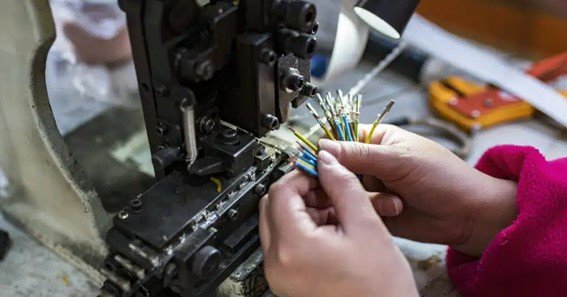Wire harnesses, often hidden behind the scenes in vehicles and aircraft, are intricate networks of wires, connectors, and other electronic components that ensure seamless power distribution and signal transmission. Their design and manufacturing demand precision and attention to detail, balancing efficient space utilization with electrical performance. Let’s explore the fascinating journey of wire harness creation.
Understanding Wire Harnesses
A wire harness, sometimes called a cable harness or wiring assembly, is essentially a bundled collection of wires, cables, connectors, and other electronic parts, all neatly organized and protected within an insulating layer. This assembly simplifies the installation and maintenance of electrical systems by consolidating multiple wires into a single manageable unit.
Also Read : What Is SMT–PCB Beginners Must Have Guide
Benefits of Wire Harnesses
- Streamlined Installation: Wire harnesses simplify the often complex task of wiring in vehicles and other equipment, saving time and effort during assembly.
- Enhanced Reliability: The protective covering shields individual wires from environmental hazards like moisture, abrasion, and vibrations, ensuring long-term reliability.
- Space Efficiency: Wire harnesses optimize space utilization, a critical factor in compact electronic devices and automotive applications.
- Reduced Risk of Shorts: The organized arrangement of wires within the harness minimizes the potential for electrical shorts, contributing to overall system safety.
Also Read : Weight Loss Plan For Men To Optimize Health And Performance
Design and Pre-Production
Wire harness design starts with a thorough understanding of the electrical and physical requirements of the target application. Once the initial design is complete, engineers create a schematic diagram and a full-scale assembly board, which serves as a blueprint for the manufacturing process.
Manufacturing Process
Design Review: The manufacturer meticulously reviews the design specifications, bill of materials, and other documentation to ensure accuracy and feasibility.
Materials Procurement: All necessary materials and components are sourced based on the finalized bill of materials.
Assembly Documentation: Detailed assembly instructions, including test procedures and visual aids, are prepared for the production team.
Inboud Inspection: Incoming materials are inspected to ensure quality and compliance with specifications.
Prototyping: A prototype harness is built to validate the design and identify potential issues before mass production.
Assembly: The actual manufacturing process involves cutting, labeling, stripping, crimping, and assembling wires and components based on the design.
Testing: The finished harness undergoes rigorous electrical testing to verify its functionality and safety.
Conclusion
Wire harness manufacturing is a complex but essential process that demands precision and expertise. By collaborating with a trusted contract manufacturer and providing clear design specifications, you can ensure the creation of high-quality wire harnesses that meet your specific needs. From intricate automotive wiring to streamlined consumer electronics, wire harnesses play a vital role in powering our modern world.
Cloom provides a wide variety of standard wire harnesses for general use and custom assembly for special use.
Our wire harness assembly process ranges from the prototype to the final packaging at competitive pricing.










